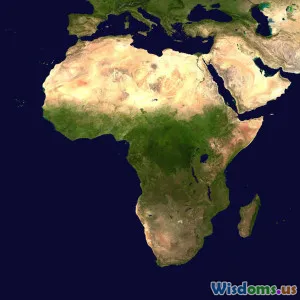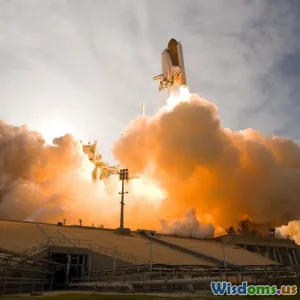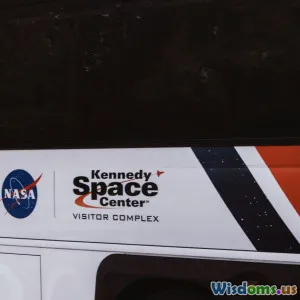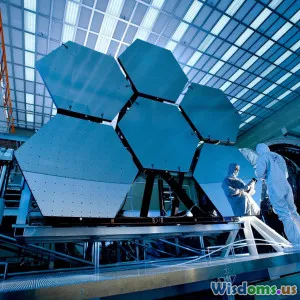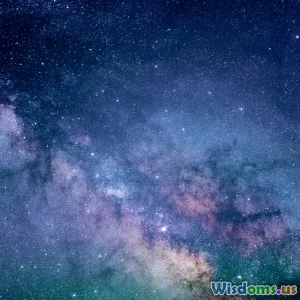
What Triggers Explosive Star Formation In Young Galaxies
9 min read Explore the cosmic forces igniting explosive star formation in young galaxies and unravel the mysteries behind their brilliant stellar birth surges. (0 Reviews)
What Triggers Explosive Star Formation In Young Galaxies
The night sky dazzles us with countless stars sprinkled across the cosmic canvas, but their birth is far from a quiet process. Particularly in young galaxies, entire regions can ignite with intense bursts of star formation, often termed “explosive.” Understanding the triggers behind these stellar fireworks isn’t just about appreciating their beauty—it also reveals the grand story of how the universe evolved from primordial gas clouds into the complex galactic structures we observe today.
In this article, we’ll dive deep into the mechanisms triggering explosive star formation in youthful galaxies. Beyond bright visuals and captivating terminology, these phenomena are windows into galaxy growth, cosmic feedback loops, and fundamental astrophysics.
Introduction: The Cosmic Fireworks of Young Galaxies
Young galaxies, especially those existing in the early universe—over 10 billion years ago—often experience episodes of star formation many times faster than galaxies like our Milky Way today. These intense starbursts result in hundreds to thousands of solar masses of gas transforming into stars each year, compared to the Milky Way’s modest rate of roughly one solar mass annually.
How do such galaxies fuel this relentless star churn? What external and internal conditions ignite this process? The challenge lies in teasing apart complex interactions involving gas flows, gravitational disturbances, and energetic feedback from emerging stars.
Anatomy of Explosive Star Formation
What Constitutes Explosive Star Formation?
Explosive star formation, often observed as starburst activity, refers to a phase when a galaxy’s star creation rate is significantly elevated—sometimes by factors of 10 to 100 above normal rates. These episodes dramatically reshape galaxy morphology, influence chemical enrichment, and pump vast energy into the surrounding interstellar medium.
Galaxies undergoing such events span various types:
- Starburst galaxies: Local examples like M82 showcase intense but localized star-forming regions.
- Submillimeter galaxies (SMGs) in the distant universe show extreme rates, often over 500 solar masses per year.
Why Study Explosive Star Formation?
Unraveling triggers offers insights into fundamental astrophysical puzzles:
- Galaxy evolution pathways: Do major mergers innovate star formation, or can isolated galaxies sustain bursts?
- Feedback processes: How do massive stars and supernovae regulate subsequent star birth?
- Cosmic reionization impact: Did starbursts in early galaxies significantly ionize the intergalactic medium?
Key Triggers of Explosive Star Formation
1. Gas Accretion and Dense Gas Reservoirs
Stars form in molecular clouds—dense, cold gas pockets rich in hydrogen molecules. For a galaxy to sustain a starburst, it must accumulate vast amounts of such gas rapidly.
Cold gas accretion from the cosmic web supplies pristine material flowing through filaments into galaxy halos. Simulations by Dekel et al. (2009) demonstrate that during a galaxy’s formative billions of years, these cold streams efficiently deliver fuel, bypassing traditional shock heating, allowing quick condensation into star-forming regions.
- Example: The “Cosmic Horseshoe” galaxy at redshift ~2 exhibits star formation fueled by continuous cold gas streams, verified through ALMA observations of molecular gas content.
Additionally, internal gas compression—caused by spiral density waves or global disk instabilities—increases the local density, rapidly converting cold gas into stars.
2. Galaxy Mergers and Interactions
Perhaps the most dramatic trigger, galaxy mergers, occur when two or more galaxies gravitationally collide and coalesce. This upheaval profoundly disturbs gas dynamics:
- Gravitational torques funnel gas towards the galaxy centers, generating dense nuclear starbursts.
- Shock waves and tidal forces compress gas clouds, catalyzing rapid star formation.
Real-world examples illustrate this trigger clearly:
- The Antennae Galaxies, a famous merging system, showcase overlapping regions rich in clusters of newborn massive stars.
- High-redshift merging galaxies observed with the Hubble and JWST show elevated star formation rates consistent with this model.
3. Environmental Effects: Galaxy Clusters and Proto-clusters
Young galaxies do not evolve in isolation. High-density regions influence star formation explosiveness:
- Protoclusters funnel gas streams toward member galaxies.
- Ram-pressure stripping within clusters can remove gas reservoirs, but also compress remaining gas pockets in galaxy outskirts.
Studies with the Atacama Large Millimeter/submillimeter Array (ALMA) reveal enhanced starburst activity among galaxies located in dense early universe proto-clusters, showing environmental modulation of star formation processes.
4. Feedback Loops: Self-Regulation of Star Formation
Counterintuitively, the very stars born in these bursts eventually moderate further star formation:
- Massive young stars emit intense UV radiation, dissociating molecular hydrogen.
- Stellar winds and supernova explosions stir interstellar gas, heating it and removing it from star-forming clouds.
This creates feedback loops that can prematurely quench or episodically regulate star formation, as seen in the dwarf starburst galaxy NGC 1569.
Understanding how young galaxies balance gas inflows and feedback-driven outflows is crucial to modeling their explosive star formation periods.
Tools and Observations Unlocking the Mystery
Modern astronomy’s leap forward owes much to cutting-edge instruments:
- JWST (James Webb Space Telescope) unveils young galaxies in unprecedented detail, enabling direct observation of early starburst regions.
- ALMA maps cold molecular gas distribution with exquisite sensitivity.
- Simulation frameworks like IllustrisTNG and EAGLE model physical conditions, reproducing observed starburst triggers.
Measurements of star formation rates, molecular gas fractions, metallicity, and galaxy kinematics offer a multi-dimensional view of what ignites stellar nurseries on cosmic scales.
Real-world Insights: Case Studies
The Cosmic Dawn and Starburst Galaxies at High Redshift
Surveys identify starbursts at redshifts z > 4 when the universe was less than 1.5 billion years old. Galaxies such as ALESS 073.1 combine large gas reservoirs and merger histories, propelling enormous star formation rates exceeding 1000 solar masses yearly.
Their study informs the role of cold gas accretion amidst a rapidly evolving universe and tests formation models.
Local Starburst Analogues
Observing nearby starburst galaxies allows detailed exploration of triggering mechanisms in action. For instance, M82’s central starburst arises partly due to interaction with its neighboring galaxy M81. Such analogues calibrate distant, less-resolved observations.
Conclusion: Weaving the Story of Cosmic Star Formation
The explosive star formation episodes in young galaxies are complex phenomena orchestrated by a confluence of factors. Cold gas inflows from the cosmic web supply the essential fuel, while interactions—from subtle environmental nudges to dramatic galaxy mergers—ignite firestorms of stellar birth. Feedback from massive stars then shapes the duration and intensity of these starbursts, synthesizing a delicate balance between creation and quenching.
These processes don't merely sculpt individual galaxies—they imprint on the large-scale structure and evolution of the universe itself. Exploring these triggers continues to challenge and expand astrophysics, with new observations from JWST and other observatories promising further revelations.
For enthusiasts, researchers, or curious minds, understanding what triggers explosive star formation in young galaxies offers a front-row seat to the grand cosmic dance that built the starry cosmos we gaze upon today.
References and Suggested Reading:
- Dekel, A. et al., “Cold streams in early massive hot haloes as the main mode of galaxy formation,” Nature, 2009.
Rate the Post
User Reviews
Other posts in Galaxies & Galaxy Clusters
Popular Posts










